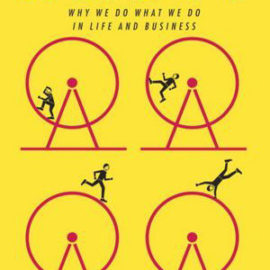Want to learn the ideas in Indistractable better than ever? Read the world’s #1 book summary of Indistractable by Nir Eyal here.
Read a brief 1-Page Summary or watch video summaries curated by our expert team. Note: this book guide is not affiliated with or endorsed by the publisher or author, and we always encourage you to purchase and read the full book.
Video Summaries of Indistractable
We’ve scoured the Internet for the very best videos on Indistractable, from high-quality videos summaries to interviews or commentary by Nir Eyal.
1-Page Summary of Indistractable
Overview
Have you ever checked your emails at a red light and then continued to write an email when the lights changed? Or have you been looking at social media on your phone in a spare moment, only to realize that you were late for something? These kinds of distractions can take away from time that could be used more productively. That’s why I recommend using the “ten-minute rule.” If you’re tempted by Twitter or Facebook, tell yourself that after ten minutes, it’s okay if you check them. Chances are, once those ten minutes are up, you’ll still want to work and won’t even notice.
To be successful, it’s important to focus on the task at hand. If you’re distracted, you’ll probably fail at finishing your book or business plan and won’t enjoy spending time with your family.
The world is full of distractions. Employers and technology are constantly pulling us away from what we want to do, even when we’re not at work or home. So how can you stay productive?
Nir Eyal has found an antidote to distraction. He calls it becoming “indistractable.” We’ll explore how you can master this skill and learn to tune out distractions so that you can focus on what matters most.
If you want to be more productive, it’s important to understand the root cause of your distraction. It’s not just about being on social media or using technology. You should also figure out why dysfunctional office cultures prevent you from getting work done and how to recognize external sources of distraction that come from others.
Big Idea #1: Distractions – We Create Our Own
We often blame technology for our distraction. However, if you try to stop using your devices and gadgets, it doesn’t mean that you’ll automatically start working. Your brain can find a lot of ways to procrastinate, even if you’re not using digital devices or gadgets.
To understand what happens when we’re distracted, we need to talk about triggers. These stimulate us into action or tell us to do something. Triggers come in two forms: external and internal. External triggers are stimuli that spur us into action from the outside world, like pop-up notifications on our laptops; internal triggers come from within our bodies and minds when we feel bored or stressed out.
There are two types of triggers. One pulls us toward our goals and the other drags us away from those same goals.
Technology is not the root cause of distraction. Distraction has internal sources, such as a rumbling stomach or marital problems or deep dissatisfaction with your career. We blame technology for our inability to get things done and fail to look at the underlying problem.
The bad news is that we are hardwired to be uncomfortable. Our ancestors’ survival depended on being dissatisfied with their situation and constantly striving for better things. This heritage shows up in our tendency to view new situations negatively, think about painful experiences, and get bored quickly.
We’re easily distracted by our emotions. But we can also use them to our advantage. Let’s learn how!
Big Idea #2: The author suggests that you should reassess your internal triggers.
Imagine you’re sitting at your desk. You feel bored and before you know it, you’ve been on Instagram for ten minutes or are going through your email again. It happens to most of us every day. There are ways to beat these triggers though.
To help you deal with triggers, try recording them. Keep a pen and paper handy to write down what triggered your distraction. Maybe it was that sudden wave of anxiety or maybe something your boss said made you angry. Record when the trigger occurred and how you felt once it happened.






